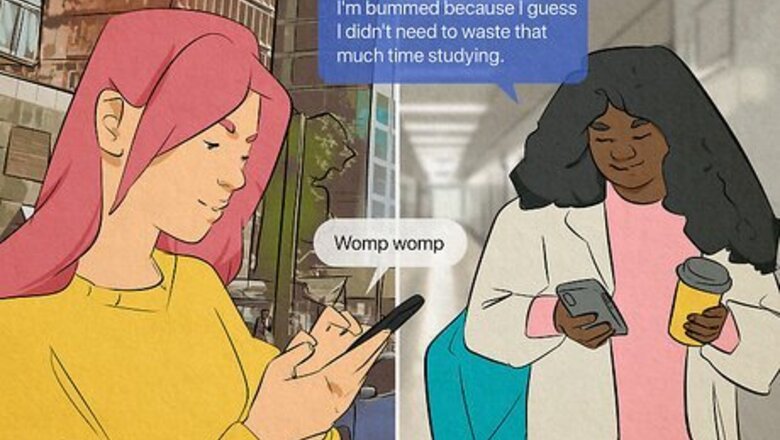
views
- "Womp womp" refers to the sad trombone sound effect played on TV shows when something bad happens to a character—it's used to make fun of a person's complaints or failures.
- "Womp womp" is mainly used sarcastically, so you might see this phrase in video comments when the original poster complains about something silly or unimportant.
- Use the phrase to playfully respond to a friend’s minor complaints, like spilling their coffee.
Womp Womp Meaning
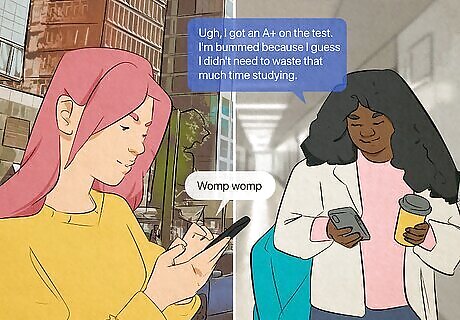
"Womp womp" mimics a sad trombone sound effect; it basically means "too bad, so sad." "Womp womp" is a sarcastic response to someone else's disappointment, complaints, or failure. On TikTok and other social media sites, users might comment the phrase when another user is complaining about something mundane. In rare cases, it can be used to actually express sympathy for someone's trouble, but most of the time, it's sort of like saying "get over it." Example: Imagine someone says: "Ugh, I got an A+ on the test. I'm bummed because I guess I didn't need to waste that much time studying." Their friend might jokingly say "womp womp" in response. This is because they're complaining getting an A+, which is actually a pretty great thing! Example: Say that someone posts a video on TikTok talking about how they got a new computer for their birthday, but they wanted a new car. Someone might comment "womp womp" on their video. This would basically be a way of saying: you're lucky, and you shouldn't be complaining!
How to Use Womp Womp in Conversation & Online
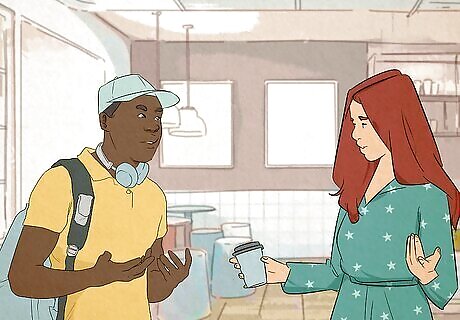
Respond to a friend’s mild disappointment. If you have a playful relationship with a friend or sibling, respond with “womp womp” when they’re telling you about a minor inconvenience, like spilling their drink or getting grounded. “Womp womp” can be used through text or said aloud in conversation. If you can tell they’re really upset by the situation, however, it might be better to provide a genuine response. Replying with “womp womp” might make them feel like you don’t care about them.
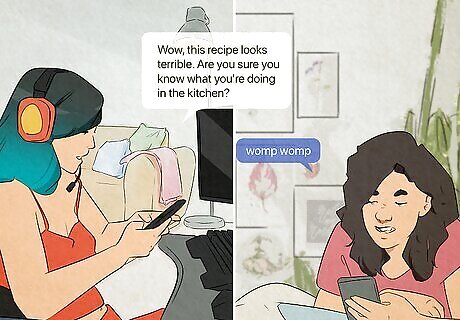
Let a troll know their words don’t affect you. If you spend any time on the Internet, you probably already know people like to be mean just because they can. If you post a photo or video and someone comments something negative about your looks or personality, reply with a simple “womp womp” to show that you don’t care what they have to say. Similarly, if someone’s complaining about something that doesn’t actually affect them (like a musician they don’t like releasing a new album or a casting choice for a new TV show), responding with “womp womp” can tell them to get over it. You can also respond with a video. For example, if someone makes a negative comment about your body, post a video of you confidently showing off whatever body part they commented on. Be sure to include “womp womp” in the video itself or in the caption.

Post a video to show your ex how well you’re doing. Many TikTokers incorporate “womp womp” into their videos, as well. For example, one popular trend is to post something like “He got a new girl” or “They said they miss me” with an average-looking selfie and then transition to a flattering photo of you with the caption “womp womp.” This implies you’re doing better without them. This trend doesn’t have to be about an ex, however. You can make a video about a toxic friend or any situation you’ve moved on from. In this context, the phrase is like responding “too bad.”
Womp Womp Origin

The phrase may have originated with vaudeville. While the exact origin of the sad trombone noise is unclear, many believe it may have originated between the 1880s and 1930s in North America. At this time, vaudeville comedies were very popular. Since then, the sound has become associated with contestants’ failures on TV game shows.











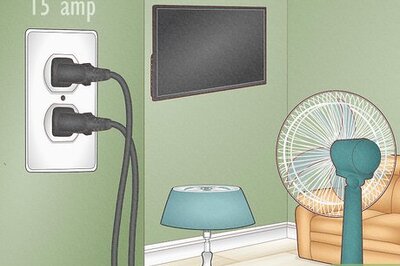




Comments
0 comment